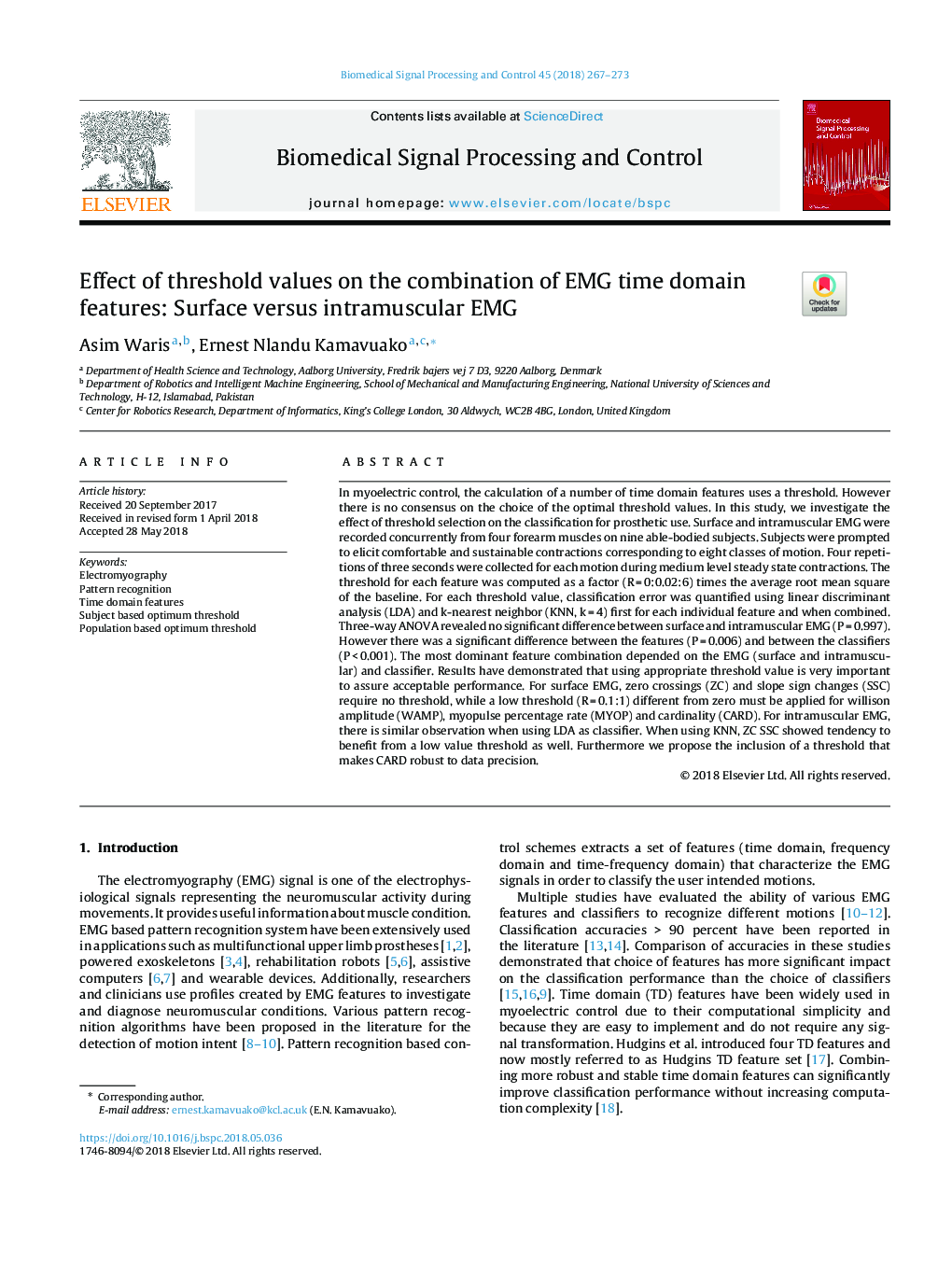| Article ID | Journal | Published Year | Pages | File Type |
|---|---|---|---|---|
| 6950740 | Biomedical Signal Processing and Control | 2018 | 7 Pages |
Abstract
In myoelectric control, the calculation of a number of time domain features uses a threshold. However there is no consensus on the choice of the optimal threshold values. In this study, we investigate the effect of threshold selection on the classification for prosthetic use. Surface and intramuscular EMG were recorded concurrently from four forearm muscles on nine able-bodied subjects. Subjects were prompted to elicit comfortable and sustainable contractions corresponding to eight classes of motion. Four repetitions of three seconds were collected for each motion during medium level steady state contractions. The threshold for each feature was computed as a factor (Râ¯=â¯0:0.02:6) times the average root mean square of the baseline. For each threshold value, classification error was quantified using linear discriminant analysis (LDA) and k-nearest neighbor (KNN, kâ¯=â¯4) first for each individual feature and when combined. Three-way ANOVA revealed no significant difference between surface and intramuscular EMG (Pâ¯=â¯0.997). However there was a significant difference between the features (Pâ¯=â¯0.006) and between the classifiers (Pâ¯<â¯0.001). The most dominant feature combination depended on the EMG (surface and intramuscular) and classifier. Results have demonstrated that using appropriate threshold value is very important to assure acceptable performance. For surface EMG, zero crossings (ZC) and slope sign changes (SSC) require no threshold, while a low threshold (Râ¯=â¯0.1:1) different from zero must be applied for willison amplitude (WAMP), myopulse percentage rate (MYOP) and cardinality (CARD). For intramuscular EMG, there is similar observation when using LDA as classifier. When using KNN, ZC SSC showed tendency to benefit from a low value threshold as well. Furthermore we propose the inclusion of a threshold that makes CARD robust to data precision.
Keywords
Related Topics
Physical Sciences and Engineering
Computer Science
Signal Processing
Authors
Asim Waris, Ernest Nlandu Kamavuako,
